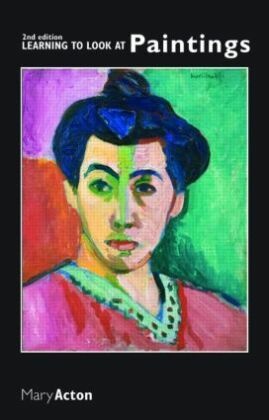| Verlag | Taylor & Francis |
| Auflage | 2008 |
| Seiten | 304 |
| Format | 13,8 x 21,6 x 1,8 cm |
| Gewicht | 470 g |
| Artikeltyp | Englisches Buch |
| ISBN-10 | 0415435188 |
| EAN | 9780415435185 |
| Bestell-Nr | 41543518EA |
Learning to Look at Paintings is an accessible guide to the study and appraisal of paintings, drawings and prints. Mary Acton shows how you can develop visual, analytical and historical skills in learning to look at and understand an image by analysing how it works, what its pictorial elements are and how they relate to each other.
Learning to Look at Paintings is an accessible guide to the study and appraisal of paintings, drawings and prints. Mary Acton shows how you can develop visual, analytical and historical skills in learning to look at and understand an image by analysing how it works, what its pictorial elements are and how they relate to each other.
This fully revised and updated new edition is illustrated with over 100 images by a wide range of Western European and American artists, ranging from Rembrandt, Van Gogh and Botticelli to Picasso, Matisse and Rothko, and now includes modern and contemporary artists such as Georgia O'Keeffe, Anselm Kiefer, Tacita Dean and Marlene Dumas. In addition, Mary Acton presents new examples highlighting the survival and revival of painting in recent years.
A new introduction situates the book in the wider context of recent changes in the approach to Art History. A glossary of critical and technical terms used in the language of Art History is a lso included, with an updated but still selective reading list.
Inhaltsverzeichnis:
Introduction to the Second Edition List of Figures List of Plates Preface Acknowledgements Introduction 1. Composition 2. Space 3. Form 4. Tone 5. Colour 6. Subject Matter 7. Drawing and its Purposes 8. Looking at Prints. Conclusion: The Use of Comparison as an Aid to Looking. Appendix 1: Some Questions to Ask Yourself When Standing in Front of a Painting Appendix 2: Glossary of Art Terms. References and Further Reading. Index
Rezension:
'Each of the six chapters has a succint introduction and a short but useful summary... Recommended.' - CHOICE

